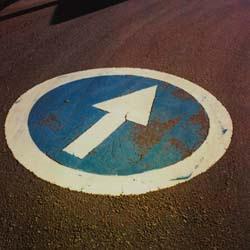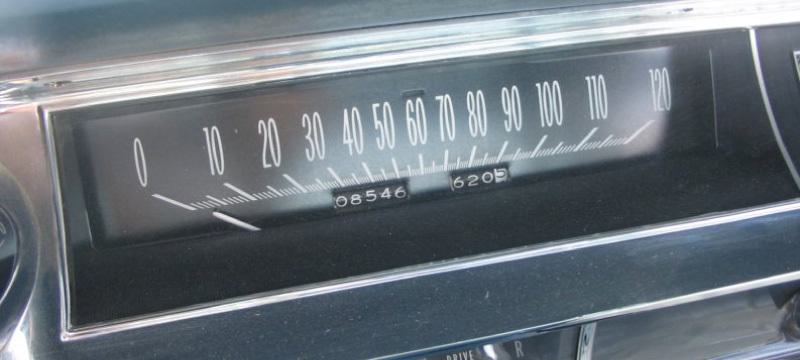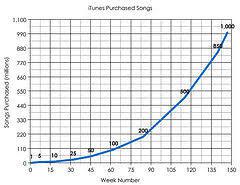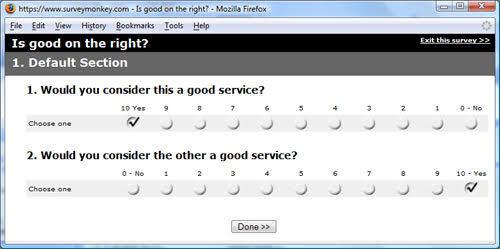In the world of surveying, which side is "good" on? Left? Or right?

We are often asked to give advice on how to put surveys together. Over the years I've collected dozens of examples and I'll share what we think is best practice in a minute, but first some background.
Around 7 - 10% of humans are left handed. Science has recently attributed this to the gene LRRTM1. But throughout history being left handed has usually had negative associations - and this can be traced through the words used to describe the condition.
From Mesopotamian time, the left hand symbolized the power to shame society, and was used as a metaphor for misfortune, natural evil, or punishment from the gods. Modern meanings evolved from the ancient terms and in many European languages.
The word "left" comes from the Old English lyft, meaning weak. "Right" is not only a synonym for correctness, but also stands for authority and justice: (German and Dutch recht, French droit); in French, "gauche" means "left" and is also a synonym of "maladroit", meaning "clumsy".
Meanwhile, the English word "sinister" comes from the Latin, which originally meant "left" but took on meanings of "evil" or "unlucky" by the Classical Latin era.
Maybe left-handers don't have it all bad. Albert Einstein, Charles Darwin and Leonardo da Vinci are prime examples of lefties who made good. And there is some evidence that left-handers think more quickly (and so can dodge trouble).
CULTURAL IMPACT
Apart from the names we call people, what are the other ways in which the left-right issue works? Let's look at popular culture.
Jennifer Van Sijll writes in Cinematic Storytelling: "As Westerners we read left-to-right. If you rented fifty studio-made movies, there's a good chance that the 'good guy' will enter screen left every time. When the 'good guy' moves left-to-right, our eyes move comfortably. Subconsciously, we begin to make positive inferences. Conversely, the antagonist usually enters from the right. Since our eyes aren't used to moving from right to left, the antagonist's entrance makes us uncomfortable. The screenwriter exploits this by transferring our learned discomfort to the characters"
So you can see that the eyes usually feel more comfortable with the left-right travel...

More examples of Good (or at least Better) on the right...

Something from the 1980s I would guess:

The meters show louder on the right...

Spinal Tap, "the loudest band in the world" had amplifiers that went all the way to 11. Which was on the right.

a graph - usually better/higher is on the top/right...

CONCLUSION
Quick question: You're filling in a survey to give someone a great mark. Do you put your tick on the right or the left?

Then why are companies still in 2022 putting the top mark on the left?

And although we allow our clients the freedom to choose, the CustomerGauge best practice is "Good goes on the right".
